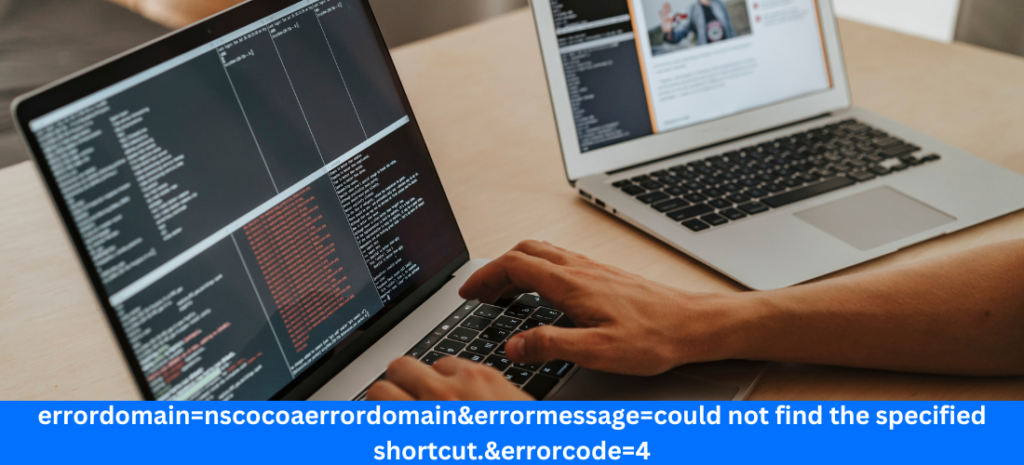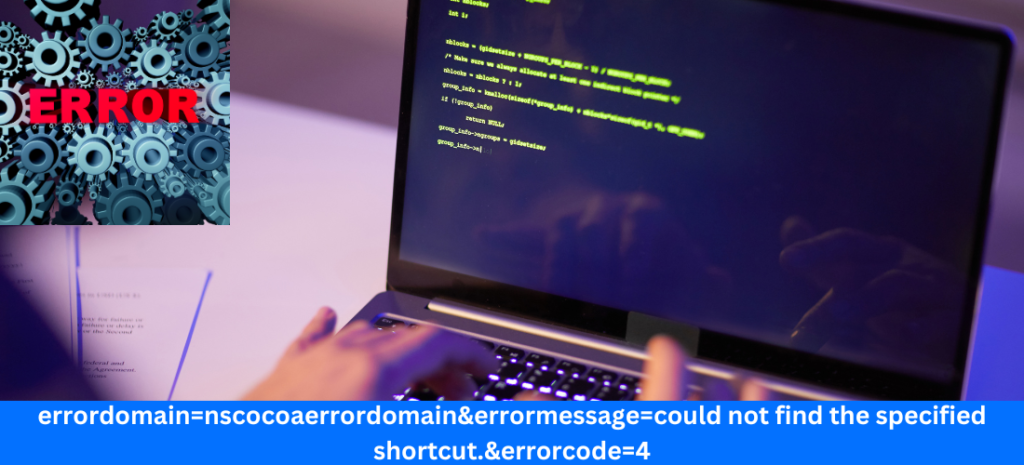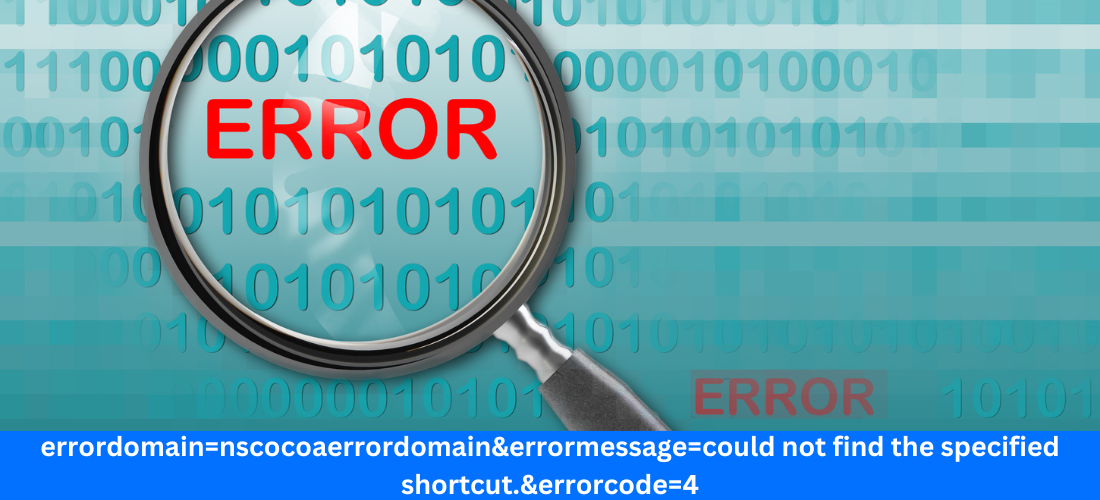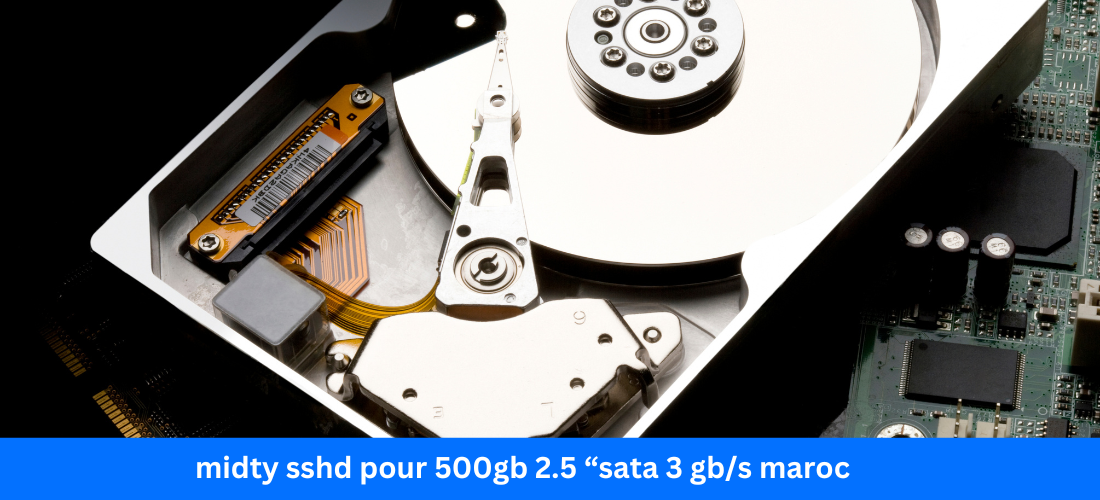Have you ever encountered the dreaded NSCocoaErrorDomain ErrorCode 4 error message while working on your iOS or macOS app? Fear not, as we are here to decode this cryptic message and provide you with a clear explanation. In this blog post, we will break down what causes this error, how it can impact your app, and most importantly, how you can fix it. So grab a cup of coffee and let’s dive into the world of NSCocoaErrorDomain ErrorCode 4!
Introduction to NSCocoaErrorDomain and Error Code 4
Have you ever encountered the frustrating NSCocoaErrorDomain ErrorCode 4 while using your Mac or iOS device? This cryptic error message can leave even the most tech-savvy individuals scratching their heads. In this blog post, we will unravel the mystery behind Error Code 4 and provide you with practical solutions to troubleshoot and resolve it. So, buckle up as we dive into decoding this perplexing error message together!
Common Causes of Error Code 4
Error Code 4 in NSCocoaErrorDomain can be frustrating, but understanding its common causes can help troubleshoot the issue effectively. One of the primary reasons for encountering Error Code 4 is missing or corrupted files within the application or system. When essential files are not accessible, it can lead to this error message popping up.
Another common cause could be related to file path issues. If the specified shortcut or file location cannot be found by the system, Error Code 4 may occur. Updating software and operating systems regularly is crucial as outdated versions may trigger compatibility issues resulting in this error.
Clearing cache and cookies can also play a role in resolving Error Code 4 as stored data may interfere with the proper functioning of applications. Restarting your device or program after performing these checks might just do the trick to eliminate this pesky error code.
Read Also: Midty SSHD for 500GB 2.5″ SATA 3 GB/s in Morocco: A Comprehensive Overview
How to Troubleshoot errordomain=nscocoaerrordomain&errormessage=could not find the specified shortcut.&errorcode=4

When encountering Error Code 4 in NSCocoaErrorDomain, troubleshooting is key to resolving the issue efficiently. One common step is checking for missing or corrupted files that could be causing the error. By verifying the integrity of files related to the problem, you might uncover the root cause.
Resolving file path issues is another vital tactic in troubleshooting Error Code 4. Ensuring that file paths are correctly configured can prevent errors from occurring. Updating software and your operating system can also address compatibility issues that may trigger Error Code 4.
Clearing cache and cookies regularly can help eliminate temporary data conflicts that lead to errors. Restarting your device or program after applying these steps can often clear out any residual issues causing Error Code 4 – providing a fresh start for troubleshooting efforts.
Checking for Missing or Corrupted Files
When encountering NSCocoaErrorDomain ErrorCode 4, one of the first steps to troubleshoot is checking for missing or corrupted files. This error can often occur due to issues with file integrity or availability.
Start by examining the files related to the specific operation triggering the error. Look for any discrepancies such as incomplete downloads, damaged files, or misplaced data.
Verify if all necessary files are present and accessible in their designated locations. Ensure that there are no permission restrictions preventing the system from accessing essential resources.
If you suspect file corruption, consider running diagnostics tools to assess and repair any damaged data. It’s crucial to maintain a clean and organized file structure to prevent future occurrences of Error Code 4.
Resolving File Path Issues

Resolving file path issues is crucial when dealing with NSCocoaErrorDomain ErrorCode 4. Incorrect or missing file paths can lead to this error, causing frustration for users. To troubleshoot, start by double-checking the file paths in question. Ensure that they are correctly entered and point to the right locations.
If you encounter errors due to incorrect paths, try correcting them manually. You can also use specialized tools to help verify and fix any path discrepancies. Additionally, consider renaming files or folders if their names contain special characters or symbols that could be causing conflicts.
Remember to pay attention to case sensitivity in file paths as well, as this can sometimes be a factor in triggering Error Code 4. By resolving file path issues diligently and accurately, you can potentially eliminate this error and improve the performance of your system significantly.
Updating Software and Operating System
Updating your software and operating system is crucial in resolving NSCocoaErrorDomain ErrorCode 4. By keeping your applications and OS up to date, you ensure compatibility with the latest features and bug fixes.
Software updates often contain patches that address known issues, including error code 4. Check for any pending updates for both the app encountering the error and your device’s operating system.
Regularly updating not only enhances performance but also strengthens security measures against potential vulnerabilities. It’s like giving your system a fresh coat of digital armor to defend against errors.
Whether it’s a minor patch release or a major update, staying current can prevent common errors like NSCocoaErrorDomain ErrorCode 4 from disrupting your workflow. So, make it a habit to regularly check for software updates to maintain smooth operations on your device.
Clearing Cache and Cookies
When encountering NSCocoaErrorDomain ErrorCode 4, clearing cache and cookies can often help resolve the issue. These temporary files stored on your device can sometimes cause conflicts leading to error messages. To clear the cache and cookies, you’ll need to access the settings or preferences section of your browser or operating system.
Once there, look for options related to privacy or browsing data. You should see an option to clear cache and cookies – select this and proceed with the clearing process. This action will remove any stored data that may be causing errors while browsing or using certain applications.
After clearing the cache and cookies, restart your device or program to ensure that the changes take effect. By doing so, you may find that Error Code 4 no longer appears when using your device or application seamlessly without interruptions.
Restarting the Device or Program
When faced with NSCocoaErrorDomain ErrorCode 4, one simple yet effective troubleshooting step is to restart the device or program. Restarting can help refresh the system and clear any temporary glitches that may be causing the error.
By restarting your device or closing and reopening the program displaying the error, you give it a chance to start afresh. This can often resolve minor issues that are hindering its normal operation.
Sometimes, errors like Error Code 4 can be resolved simply by giving your device or program a quick restart. It’s a quick and easy solution that may save you time and frustration in trying to troubleshoot more complex issues.
If you encounter NSCocoaErrorDomain ErrorCode 4, don’t underestimate the power of a simple restart. It could be just what you need to get things back on track without diving into more complicated solutions.
Advanced Solutions for Error Code 4

When facing the dreaded NSCocoaErrorDomain ErrorCode 4, advanced solutions may be needed to tackle this pesky error. For Mac users, delving into Terminal commands can provide a deeper level of troubleshooting. By utilizing specific commands, you can potentially uncover underlying issues causing Error Code 4.
Reinstalling software is another advanced solution worth considering. Sometimes a fresh installation can resolve any lingering issues related to missing or corrupted files that trigger the error message. This process may require some time and effort but could ultimately prove to be the fix you need.
Exploring these advanced solutions for Error Code 4 can help you navigate through the technical nuances of NSCocoaErrorDomain errors with more confidence and expertise. Don’t hesitate to dive into these methods when standard troubleshooting steps fall short in resolving this frustrating error.
Using Terminal Commands on Mac OS
If you encounter NSCocoaErrorDomain ErrorCode 4 on your Mac, using Terminal commands can be a powerful troubleshooting tool. The Terminal allows you to access the core functions of your operating system through text commands.
To start, open the Terminal application on your Mac. You can do this by searching for it in Spotlight or locating it in the Utilities folder within Applications. Once opened, carefully enter the specific commands relevant to resolving Error Code 4.
One common command is ‘ls’ which lists all files and directories in a specified location. Another useful command is ‘cd’ which allows you to change directories within the file system. Be cautious when using terminal commands as they directly impact system files.
By navigating and manipulating files through Terminal, you may uncover underlying issues causing Error Code 4 and potentially find solutions that traditional methods overlook.
Reinstall
By following the troubleshooting steps outlined above, you should be able to resolve the NSCocoaErrorDomain ErrorCode 4 efficiently. However, if you still encounter issues after trying all the solutions provided, it might be time to consider reinstalling the software or application causing the error. Reinstalling can often fix underlying problems and provide a fresh start for your system. Remember to back up any important data before proceeding with a reinstall to avoid losing any crucial information. Good luck in resolving Error Code 4 and getting back to using your device smoothly!

Conclusion
Understanding the NSCocoaErrorDomain ErrorCode can be a daunting task, but with the right knowledge and resources, it is possible to decode these error messages and find solutions to fix them. As we have learned, the NSCocoaErrorDomain ErrorCode is an umbrella term for a variety of errors related to Cocoa frameworks in macOS and iOS.
Firstly, when encountering an NSCocoaErrorDomain ErrorCode, it is important to identify which specific error code it belongs to. This can be done by checking the range of values for each error code and using tools like NSLog or NSError descriptions.
Next, understanding the meaning behind each error code is crucial in finding the appropriate solution. By referring to official Apple documentation or developer forums, one can get a better understanding of what caused the error and how it can be resolved.
Another common cause is memory management problems where objects are not properly allocated or released. Using tools like Xcode’s Instruments tool can help identify memory leaks and fix them accordingly.
To sum up, decoding NSCocoaErrorDomain ErrorCodes requires patience and an in-depth understanding of Cocoa frameworks. By following the steps outlined in this article and utilizing available resources effectively, you will be able to decipher these errors and fix them, ensuring a smooth and error-free experience for your application users.
Read Also: Why You Should Never Ignore Website Revamping Lordwoods.com
FAQ
In this section, we will address some frequently asked questions regarding the NSCocoaErrorDomain error code and provide detailed explanations to help you better understand this error message.
Q: What does NSCocoaErrorDomain mean?
A: NSCocoaErrorDomain is a domain used by Apple’s Cocoa frameworks to handle errors related to the Objective-C runtime. This domain covers a wide range of errors that can occur while using Apple’s Cocoa APIs.
Q: What is the significance of the ErrorCode in NSCocoaErrorDomain?
A: The ErrorCode in NSCocoaErrorDomain is a unique identifier for each type of error. It helps developers pinpoint the specific cause of an error and provides them with information on how to resolve it.
Q: How do I know which ErrorCode is causing my issue?
A: When you encounter an error with the NSCocoaErrorDomain domain, you can look at the associated ErrorCode to narrow down the possible causes. You can find a list of common ErrorCodes and their meanings in Apple’s official documentation or by searching online for specific errors.
Q: Can different applications have different ErrorCodes for the same issue?
A: Yes, different applications may have different ErrorCodes for similar issues depending on how they handle errors and what frameworks they use. However, most common ErrorCodes should have consistent meanings across applications.
Q: Can I ignore an NSCocoaErrorDomain error if my application seems to be functioning properly?
A: No, it is not recommended to ignore any type of error message as it may lead to unexpected behavior or crashes down the line. It is best to address all errors as soon as they are encountered and find suitable solutions to prevent future occurrences.
Q: Are there any common solutions for resolving NSCocoaErrorDomain errors?
A: Unfortunately, there is no one-size-fits-all solution for resolving these types of errors as they can be caused by various factors. However, some general approaches to try include checking your code for typos or logical errors, updating to the latest version of Xcode and iOS, and reviewing any third-party libraries you are using for compatibility issues.
By understanding the answers to these frequently asked questions and having a better understanding of the NSCocoaErrorDomain error code, you can effectively troubleshoot and resolve any issues that may arise while working with Apple’s Cocoa frameworks. Remember to always carefully read the associated ErrorCode and consult official documentation before making any changes to your code.




